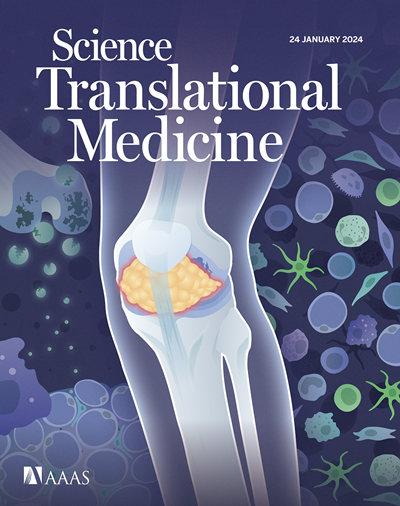prM突变可减轻登革病毒在人体细胞中的复制,从而增强蚊子的中肠感染。
IF 15.8
1区 医学
Q1 CELL BIOLOGY
引用次数: 0
摘要
登革热病毒(DENV)与所有病毒一样,通过进化使其物种在宿主体内永久传播。然而,人们对登革热病毒遗传学如何影响登革热疾病爆发仍知之甚少。在这里,我们研究了南太平洋登革热病毒2型(DENV-2)的分离物,该病毒出现于20世纪70年代,在该地区的岛屿上引起了登革热的大爆发,直到它到达汤加,那里才报告了几例轻微病例。在系统发育上,汤加分离出的 DENV-2 株系与感染其他南太平洋岛屿人群的株系不同。我们发现,汤加 DENV-2 株系膜前蛋白(prM)第 86 位组氨酸对精氨酸的单个置换可以解释这一流行病学观察结果。这一突变削弱了病毒蛋白在哺乳动物细胞中的翻译,但在蚊媒埃及伊蚊的中肠细胞中却没有影响。在哺乳动物细胞中,prM 突变导致病毒基因组翻译减少,病毒复制也随之减少。相反,在蚊子的中肠细胞中,prM 突变带来了选择性感染优势,这可能是因为突变引入了带正电的精氨酸残基。这些发现从分子角度揭示了 20 世纪 70 年代登革热在南太平洋爆发期间,减毒的 DENV-2 在汤加长达一年的无声传播。本文章由计算机程序翻译,如有差异,请以英文原文为准。
A prM mutation that attenuates dengue virus replication in human cells enhances midgut infection in mosquitoes
Dengue viruses (DENVs), like all viruses, evolve to perpetuate transmission of their species in their hosts. However, how DENV genetics influences dengue disease outbreaks remains poorly understood. Here, we examined isolates of the South Pacific dengue virus type 2 (DENV-2) that emerged in the 1970s and caused major dengue outbreaks in islands in this region until it reached Tonga, where only a few mild cases were reported. Phylogenetically, the DENV-2 strain isolated in Tonga segregated into a clade different from those clades infecting populations in other South Pacific islands. We found that this epidemiological observation could be explained by a single histidine-to-arginine substitution in position 86 of the premembrane (prM) protein of the Tonga DENV-2 strain. This mutation attenuated viral protein translation in mammalian cells but not in midgut cells of the mosquito vector Aedes aegypti. In mammalian cells, the prM mutation resulted in reduced translation of the viral genome and subsequent reduced virus replication. In contrast, in mosquito midgut cells, the prM mutation conferred a selective infection advantage, possibly because of the positively charged arginine residue introduced by the mutation. These findings provide molecular insights into the year-long silent transmission of attenuated DENV-2 in Tonga during the 1970s dengue outbreak in the South Pacific.
求助全文
通过发布文献求助,成功后即可免费获取论文全文。
去求助
来源期刊

Science Translational Medicine
CELL BIOLOGY-MEDICINE, RESEARCH & EXPERIMENTAL
CiteScore
26.70
自引率
1.20%
发文量
309
审稿时长
1.7 months
期刊介绍:
Science Translational Medicine is an online journal that focuses on publishing research at the intersection of science, engineering, and medicine. The goal of the journal is to promote human health by providing a platform for researchers from various disciplines to communicate their latest advancements in biomedical, translational, and clinical research.
The journal aims to address the slow translation of scientific knowledge into effective treatments and health measures. It publishes articles that fill the knowledge gaps between preclinical research and medical applications, with a focus on accelerating the translation of knowledge into new ways of preventing, diagnosing, and treating human diseases.
The scope of Science Translational Medicine includes various areas such as cardiovascular disease, immunology/vaccines, metabolism/diabetes/obesity, neuroscience/neurology/psychiatry, cancer, infectious diseases, policy, behavior, bioengineering, chemical genomics/drug discovery, imaging, applied physical sciences, medical nanotechnology, drug delivery, biomarkers, gene therapy/regenerative medicine, toxicology and pharmacokinetics, data mining, cell culture, animal and human studies, medical informatics, and other interdisciplinary approaches to medicine.
The target audience of the journal includes researchers and management in academia, government, and the biotechnology and pharmaceutical industries. It is also relevant to physician scientists, regulators, policy makers, investors, business developers, and funding agencies.
 求助内容:
求助内容: 应助结果提醒方式:
应助结果提醒方式:


